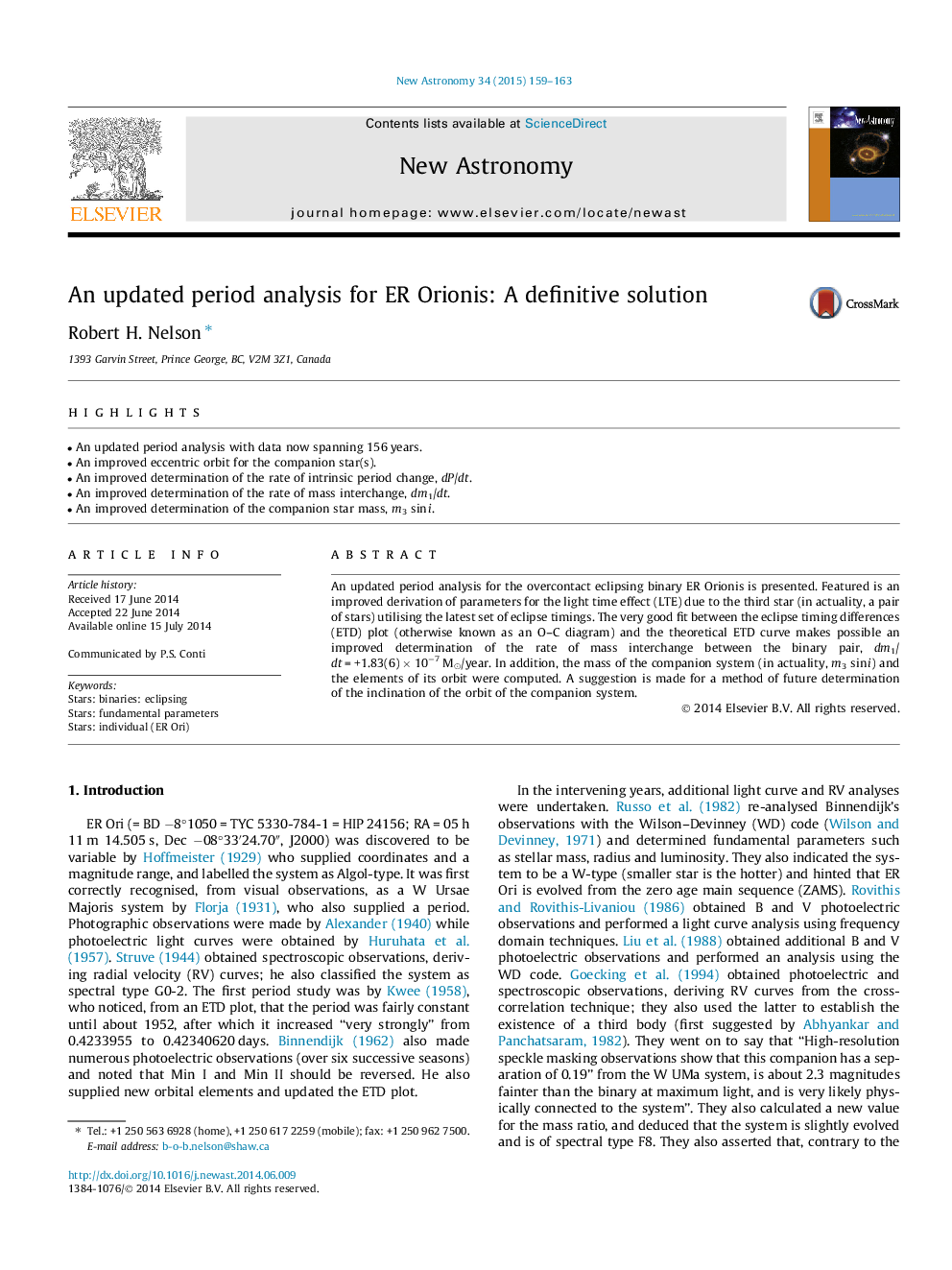| Article ID | Journal | Published Year | Pages | File Type |
|---|---|---|---|---|
| 1778971 | New Astronomy | 2015 | 5 Pages |
•An updated period analysis with data now spanning 156 years.•An improved eccentric orbit for the companion star(s).•An improved determination of the rate of intrinsic period change, dP/dt.•An improved determination of the rate of mass interchange, dm1/dt.•An improved determination of the companion star mass, m3 sin i.
An updated period analysis for the overcontact eclipsing binary ER Orionis is presented. Featured is an improved derivation of parameters for the light time effect (LTE) due to the third star (in actuality, a pair of stars) utilising the latest set of eclipse timings. The very good fit between the eclipse timing differences (ETD) plot (otherwise known as an O–C diagram) and the theoretical ETD curve makes possible an improved determination of the rate of mass interchange between the binary pair, dm1/dt = +1.83(6) × 10−7 Mʘ/year. In addition, the mass of the companion system (in actuality, m3 sin i) and the elements of its orbit were computed. A suggestion is made for a method of future determination of the inclination of the orbit of the companion system.
